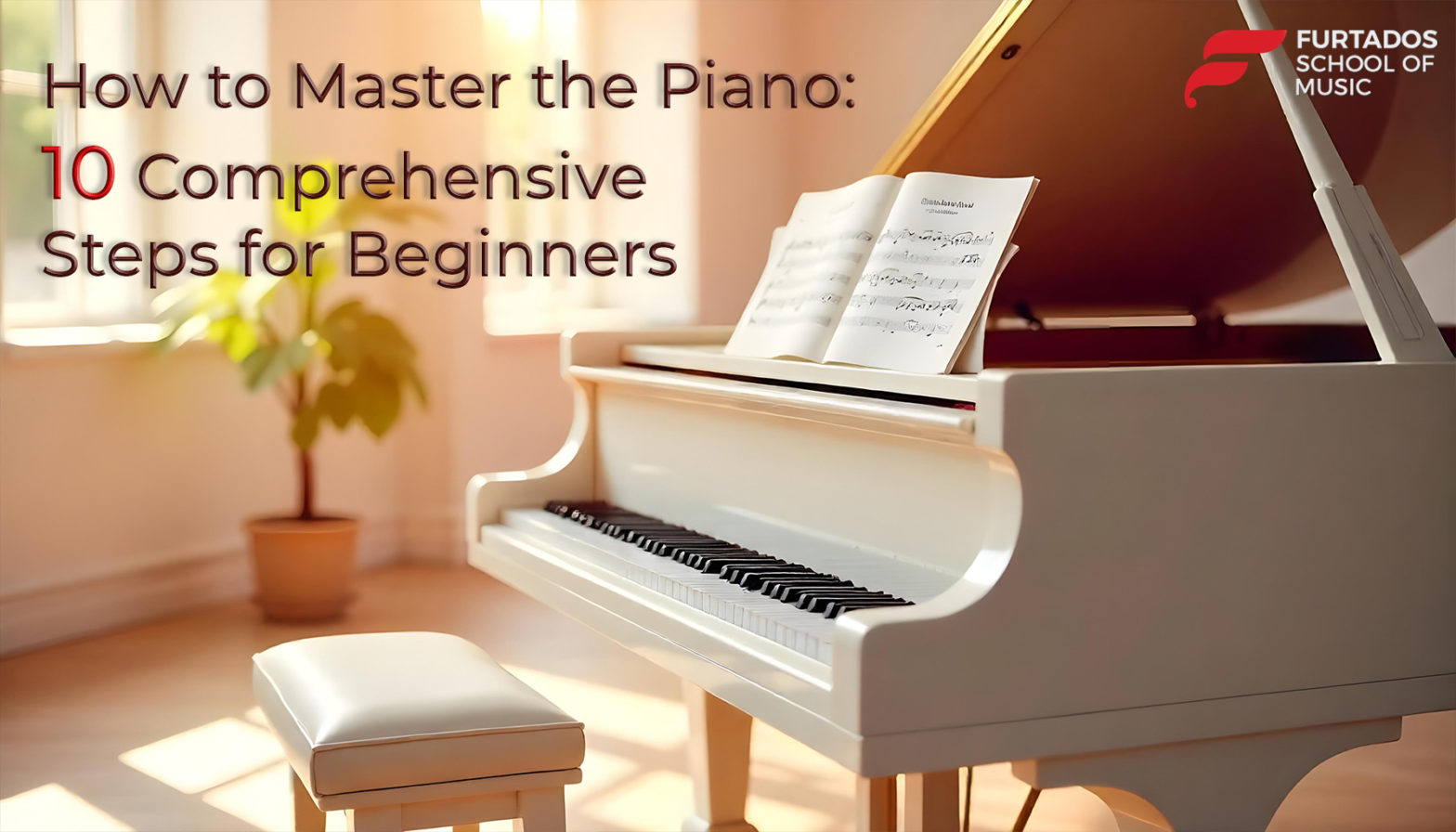Embarking on the journey to master the piano is both exciting and rewarding. By following these ten comprehensive steps, you can build a solid foundation and develop your skills effectively.
-
Immerse Yourself in Music
Surrounding yourself with various musical genres is essential to developing a keen ear. Listening to different styles—classical, jazz, pop, or blues—enhances your understanding of rhythm, melody, and harmony, all crucial elements in piano playing. Active listening helps you recognize patterns and structures in music, making it easier to interpret and perform pieces on the piano.
-
Understand the Layout of the Piano
Familiarizing yourself with the keyboard’s structure is fundamental. The piano consists of repeating sets of 12 keys: seven white keys (C, D, E, F, G, A, B) and five black keys. Identifying patterns, such as groups of two and three black keys, aids in locating notes efficiently. For instance, the note C is always immediately to the left of a group of two black keys. Understanding this layout is crucial for navigating the keyboard with confidence.
-
Learn Basic Music Theory
Grasping fundamental concepts like scales, chords, and key signatures is vital. Scales are sequences of notes in a specific order, serving as the building blocks of music. Chords are combinations of notes played simultaneously, forming the harmony of a piece. Key signatures indicate the key of a piece, showing which notes are to be played as sharps or flats. Understanding these elements enables you to read sheet music and comprehend the structure of compositions, facilitating easier learning and memorization of pieces.
-
Develop Proper Posture and Hand Positioning
Maintaining an upright posture with relaxed shoulders is essential for effective piano playing. Sit at the center of the keyboard, ensuring your feet are flat on the floor. Keep your fingers curved and wrists level with the keyboard. Proper technique prevents strain and facilitates fluid movement across the keys, allowing for greater control and expression in your playing. Regularly check your posture to avoid developing bad habits that could hinder your progress.
-
Practice Finger Exercises
Engaging in exercises like those found in Hanon or Czerny’s studies helps build finger strength and dexterity. These exercises are designed to improve finger independence and agility, essential for playing complex pieces. Incorporate them into your daily practice routine to enhance control and precision. Start slowly, focusing on accuracy, and gradually increase the tempo as your proficiency improves.
-
Start with Simple Pieces
Beginning with easy songs allows you to apply your knowledge practically. Pieces like “Twinkle, Twinkle, Little Star” or Beethoven’s “Ode to Joy” are excellent for beginners. These compositions are straightforward, enabling you to practice reading sheet music, coordinating both hands, and developing a sense of timing without becoming overwhelmed. As your confidence grows, gradually progress to more challenging pieces.
-
Use a Metronome
Practicing with a metronome develops a strong sense of timing and rhythm. A metronome provides a steady beat, helping you maintain a consistent tempo throughout a piece. Start at a slow tempo to ensure accuracy, gradually increasing the speed as you become more comfortable. This practice enhances your ability to play in time, an essential skill when performing with others or along with recordings.
-
Record and Evaluate Your Practice
Recording your practice sessions allows for objective self-assessment. Listening to your performances helps identify areas needing improvement, such as timing issues, incorrect notes, or dynamic inconsistencies. It also enables you to track your progress over time, providing motivation and insight into your development. Use recordings to set specific goals for each practice session, focusing on refining particular aspects of your playing.
-
Seek Feedback and Instruction
Consider taking lessons from a qualified instructor or utilizing reputable online platforms. Constructive feedback accelerates learning and corrects potential mistakes early on. An experienced teacher can provide personalized guidance, tailored to your strengths and weaknesses, ensuring efficient progress. If in-person lessons aren’t feasible, numerous online resources offer structured courses and tutorials to support your learning journey.
-
Maintain Consistent Practice Habits
Establishing a regular practice schedule is crucial for steady progress. Aim for daily sessions, even if brief, as consistency is more effective than infrequent, longer practices. Set specific, achievable goals for each session to maintain focus and motivation. Incorporate a variety of activities, including technical exercises, repertoire practice, and sight-reading, to develop well-rounded skills. Remember, quality of practice often outweighs quantity; attentive, mindful practice leads to more significant improvement.
Embarking on the journey to learn the piano requires dedication, patience, and a structured approach. By immersing yourself in music, understanding the instrument, learning fundamental theory, and maintaining consistent practice habits, you lay the groundwork for a fulfilling and enjoyable musical experience. Celebrate your progress, remain open to learning, and most importantly, enjoy the process of making music.
